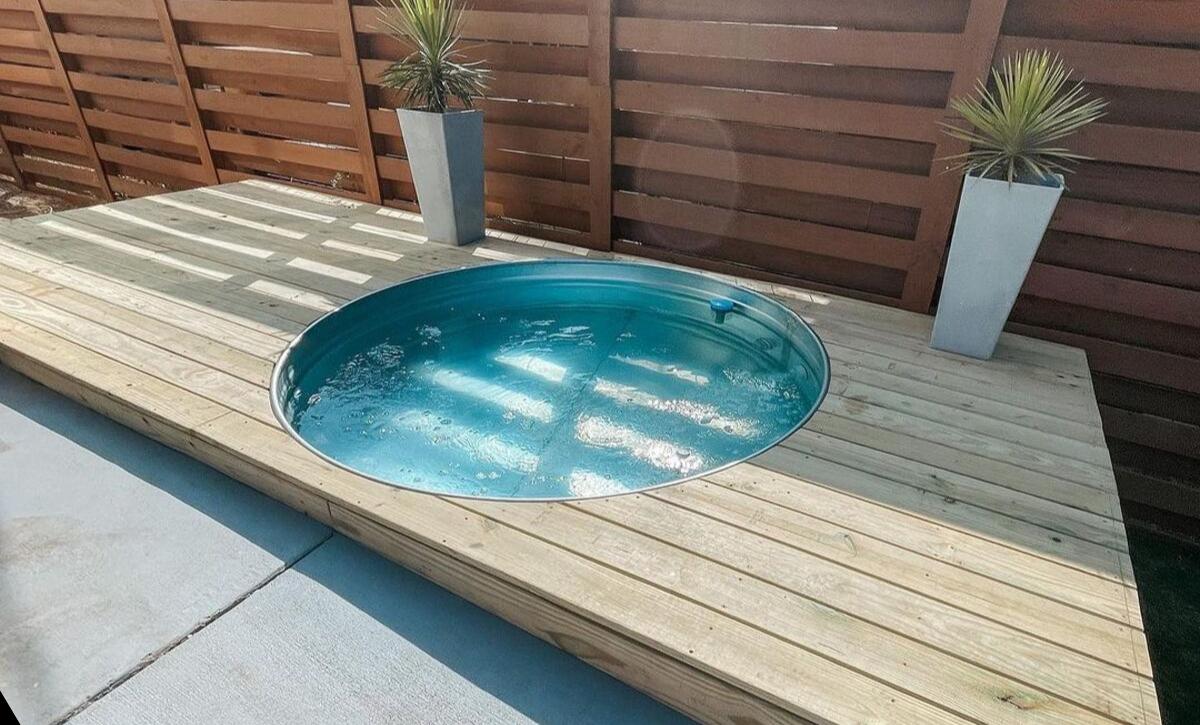
One of the most common finishes for your home’s swimming pools is pool plaster, especially for an in-ground pool.
However, while it may seem a cliche to use a standard finish for one of the most unique additions to your home, there are ways to spruce it up by picking a unique plaster color.
Various plaster colors, such as tropical blues, bright whites, dark black, and natural stone, will work well for your swimming pool.
Here is a detailed look at these colors and what you should know about each one of them before taking the next step.
What Is Pool Plaster?

When designing a concrete pool, one of the final steps is adding a seal of pool plaster. The plaster is mixed with Portland cement and water. The different colors of the plaster are brought about by the type of sand and silica added to the mixture.
For brighter colors, such as bright white and tropical blues, marble dust is added to the mixture, while silica sand and some dye are added for darker tones. Silica sand produces earthy tones when used alone.
Various Color Options For Pool Plaster
Bright White
This is one of the most common plaster colors for a pool. The main advantage of bright white is that it creates a clean look that will give your pool a shimmering look. There are different shades of white to choose from, so it should be easy to match the aesthetics of your home.
However, there are a few downsides to this shade. While bright white creates a shiny look, it also makes it easy to notice algae, debris, and stains in the pool. This means that you’ll need to frequently clean your pool to avoid stains from showing.
Tropical Blues
Tropical blue is the ultimate choice if you want a bright look in your pool but also want it to be easy to clean. Additionally, the tropical blue color of the plaster gives the pool a blue color that provides the water with an oceanic, naturalistic look.
Unlike bright white, tropical blue can better conceal stains, algae, and debris. However, this doesn’t mean you should forgo proper maintenance and care of the pool, as this could be messy and ruin the entire look.
It’s essential to regularly clean and maintain your pool to minimize the risk of replacing the plaster prematurely.
Natural Stone
When blending the look of your pool to mimic that of the ocean, using natural colors such as beige or sand will provide the perfect illusion.
What I like most about the natural stone look is that it’s unique, so you get a one-of-a-kind look in your pool. This will also provide you with a perfect median color that’s neither particularly dark nor bright.
Natural stone creates the perfect blend, primarily if the pool is in a desert or dry environment.
Dark Black
If you want to make a statement with your pool design, black plaster is the way to go. These sleek pools stand out and will make an impression when paired with matching fittings. Black pools give the appearance of modern aesthetics and will fit nicely in contemporary designs.
However, before hopping on this design idea, you should note that, like bright white pools, black pools are more likely to show scale from water due to the contrasting colors. This may mean frequent cleaning. Additionally, as the black color fades, the pool may start showing imperfections in the finishes, such as trowel strokes or boot prints.
Other Important Considerations
Besides the color, you should also consider the texture when making a pool finish. Finishes range from smooth to pebble-like finishes that mimic the bottom of the lake.
What differentiates the texture is the size of the aggregate added to the mix. A coarse finish uses less aggregate than a smooth finish.

Frequently Asked Questions
What is the best color for a pool plaster?
Generally, this boils down to personal style and preference. Look at the surrounding landscape and what you want to achieve with the pool. Try to match this with your choice. However, bright white has been proven to be a reasonably untroublesome pool plaster color.
Does non-white pool plaster fade faster than colorful plaster?
Yes. Darker and colorful pool colors will fade faster than white plaster, and you’ll likely notice flaws sooner than white plaster, which doesn’t fade quickly.
Can you color white pool plaster?
No. Once you have added the plaster and cured it, you cannot color it. If you want to color white pool plaster, add a dye before using it in your pool.
Should you use a plaster finish for your pool?
While there are more affordable ways, using pool plaster is an excellent long-term investment since it can provide you with about a decade of smooth “sailing” or, should I say, swimming with minimal repairs to worry about.












